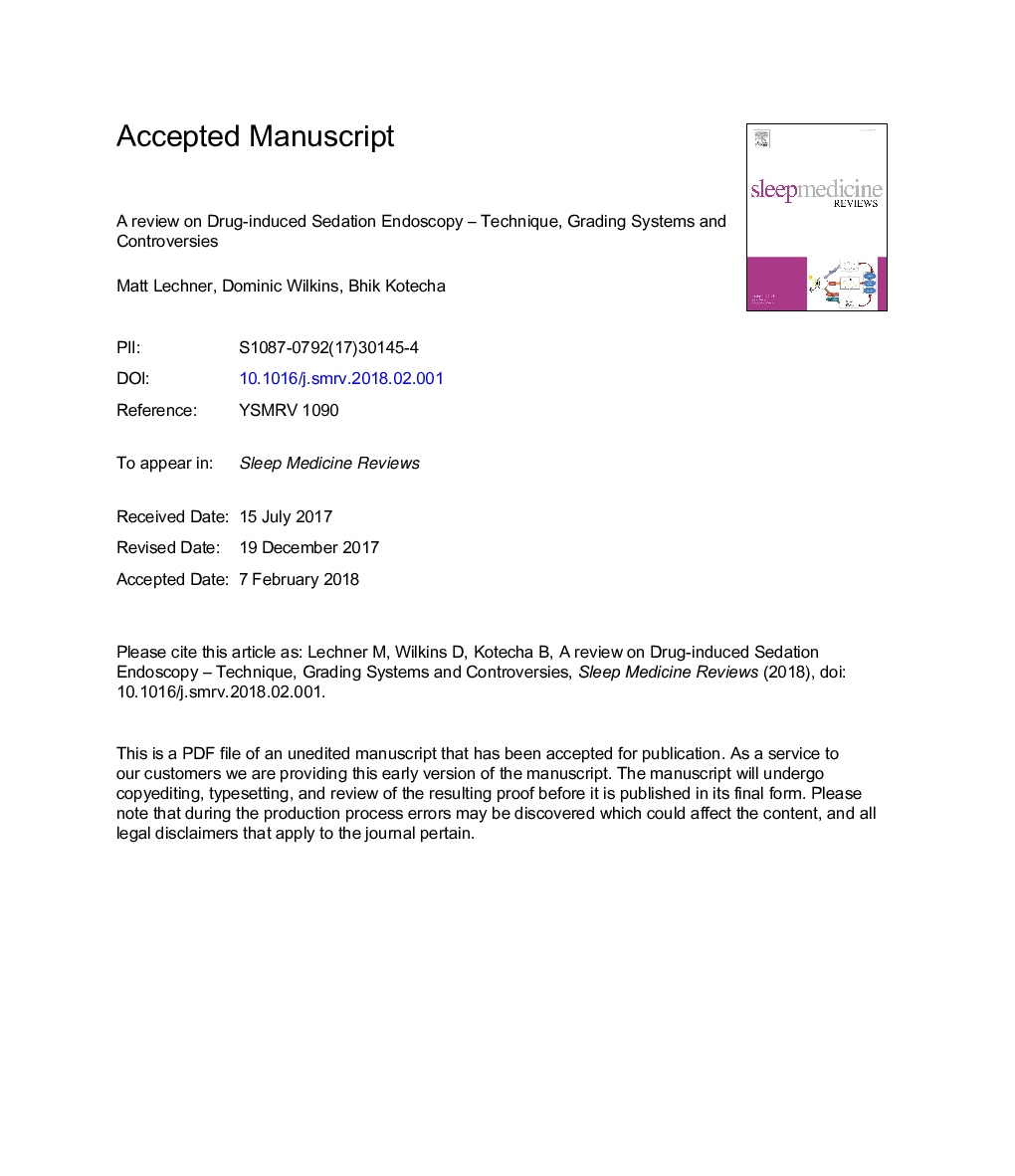| Article ID | Journal | Published Year | Pages | File Type |
|---|---|---|---|---|
| 8963415 | Sleep Medicine Reviews | 2018 | 19 Pages |
Abstract
Sleep disordered breathing (SDB) comprises a spectrum of disorders, ranging from simple snoring to severe obstructive sleep apnoea (OSA), with a significant burden to health care systems in high income countries. If left untreated, OSA has significant cumulative, long-term health consequences. In the 1990s drug induced sedation endoscopy (DISE) has been developed to become a primary tool in the diagnosis and management of OSA. It allows meticulous endoscopic evaluation of the airway and identifies areas of collapse, thereby informing both on the selection of surgical techniques, where efficacy depends entirely on success at relieving obstruction at a certain level and on the usefulness of conservative measures, such as mandibular advancement splints. This article provides a review of the literature on DISE, covering different grading systems and techniques, explaining different rationales and discussing controversies.
Related Topics
Life Sciences
Neuroscience
Neurology
Authors
Matt Lechner, Dominic Wilkins, Bhik Kotecha,
